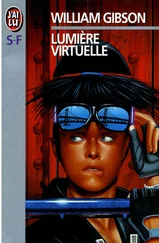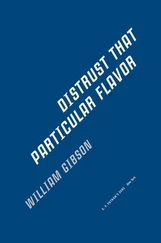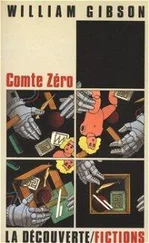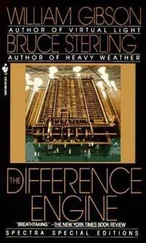William Gibson - The Gernsback Continuum
Здесь есть возможность читать онлайн «William Gibson - The Gernsback Continuum» весь текст электронной книги совершенно бесплатно (целиком полную версию без сокращений). В некоторых случаях можно слушать аудио, скачать через торрент в формате fb2 и присутствует краткое содержание. Жанр: Фантастика и фэнтези, на английском языке. Описание произведения, (предисловие) а так же отзывы посетителей доступны на портале библиотеки ЛибКат.
- Название:The Gernsback Continuum
- Автор:
- Жанр:
- Год:неизвестен
- ISBN:нет данных
- Рейтинг книги:5 / 5. Голосов: 1
-
Избранное:Добавить в избранное
- Отзывы:
-
Ваша оценка:
- 100
- 1
- 2
- 3
- 4
- 5
The Gernsback Continuum: краткое содержание, описание и аннотация
Предлагаем к чтению аннотацию, описание, краткое содержание или предисловие (зависит от того, что написал сам автор книги «The Gernsback Continuum»). Если вы не нашли необходимую информацию о книге — напишите в комментариях, мы постараемся отыскать её.
The Gernsback Continuum — читать онлайн бесплатно полную книгу (весь текст) целиком
Ниже представлен текст книги, разбитый по страницам. Система сохранения места последней прочитанной страницы, позволяет с удобством читать онлайн бесплатно книгу «The Gernsback Continuum», без необходимости каждый раз заново искать на чём Вы остановились. Поставьте закладку, и сможете в любой момент перейти на страницу, на которой закончили чтение.
Интервал:
Закладка:
William Gibson
The Gernsback Continuum
Mercifully, the whole thing is starting to fade, to become an episode. When I do still catch the odd glimpse, it's peripheral; mere fragments of mad-doctor chrome, confining themselves to the corner of the eye. There was that flying-wing liner over San Francisco last week, but it was almost translucent. And the shark-fin roadsters have gotten scarcer, and freeways discreetly avoid unfolding themselves into the gleaming eighty lane monsters I was forced to drive last month in my rented Toyota. And I know that none of it will follow me to New York; my vision is narrowing to a single wavelength of probability. I've worked hard for that. Television helped a lot. I suppose it started in London, in that bogus Greek taverna in Battersea Park Road, with lunch on Cohen's corporate tab. Dead steam-table food and it took them thirty minutes to find an ice bucket for the retsina. Cohen works for Barris-Watford, who publish big, trendy "trade" paperbacks: illustrated histories of the neon sign, the pinball machine, the windup toys of Occupied Japan. I'd gone over to shoot a series of shoe ads; California girls with tanned legs and frisky DayGb jogging shoes had capered for me down the escalators of St. John's Wood and across the platforms of Tooting Bec. A lean and hungry young agency had decided that the mystery of London Transport would sell waffle-tread nylon runners. They decide; I shoot. And Cohen, whom I knew vaguely from the old days in New York, had invited me to lunch the day before I was due out of Heathrow. He brought along a very fashionably dressed young woman named Dialta Downes, who was virtually chinless and evidently a noted pop-art historian. In retrospect, I see her walking in beside Cohen under a floating neon sign that flashes THIS WAY LIES MADNESS in huge sans-serif capitals.
Cohen introduced us and explained that Dialta was the prime mover behind the latest Barris-Watford project, an illustrated history of what she called "American Streamlined Moderne." Cohen called it "raygun Gothic." Their working title was The Airstream Futuropolis: The Tomorrow That Never Was.
There's a British obsession with the more baroque elements of American pop culture, something like the weird cowboys-and-Indians fetish of the West Germans or the aberrant French hunger for old Jerry Lewis films. In Dialta Downes this manifested itself in a mania for a uniquely American form of architecture that most Americans are scarcely aware of. At first I wasn't sure what she was talking about, but gradually it began to dawn on me. I found myself remembering Sunday morning television in the Fifties.
Sometimes they'd run old eroded newsreels as filler on the local station. You'd sit there with a peanut butter sandwich and a glass of milk, and a static-ridden Hollywood baritone would tell you that there was A Flying Car in Your Future. And three Detroit engineers would putter around with this big old Nash with wings, and you'd see it rumbling furiously down some deserted Michigan runway. You never actually saw it take off, but it flew away to Dialta Downes's never-never land, true home of a generation of completely uninhibited technophiles. She was talking about those odds and ends of "futuristic" Thirties and Forties architecture you pass daily in American cities without noticing; the movie marquees ribbed to radiate some mysterious energy, the dime stores faced with fluted aluminum, the chrome-tube chairs gathering dust in the lobbies of transient hotels. She saw these things as segments of a dreamworld, abandoned in the uncaring present; she wanted me to photograph them for her.
The Thirties had seen the first generation of American industrial designers; until the Thirties, all pencil sharpeners had looked like pencil sharpeners your basic Victorian mechanism, perhaps with a curlicue of decorative trim. After the advent of the designers, some pencil sharpeners looked as though they'd been put together in wind tunnels. For the most part, the change was only skin-deep; under the streamlined chrome shell, you'd find the same Victorian mechanism. Which made a certain kind of sense, because the most successful American designers had been recruited from the ranks of Broadway theater designers. It was all a stage set, a series of elaborate props for playing at living in the future.
Over coffee, Cohen produced a fat manila envelope full of glossies. I saw the winged statues that guard the Hoover Dam, forty-foot concrete hood ornaments leaning steadfastly into an imaginary hurricane. I saw a dozen shots of Frank Lloyd Wright's Johnson's Wax Building, juxtaposed with the covers of old Amazing Stories pulps, by an artist named Frank R. Paul; the employees of Johnson's Wax must have felt as though they were walking into one of Paul's spray-paint pulp utopias. Wright's building looked as though it had been designed for people who wore white togas and Lucite sandals. I hesitated over one sketch of a particularly grandiose prop-driven airliner, all wing, like a fat symmetrical boomerang with windows in unlikely places. Labeled arrows indicated the locations of the grand ballroom and two squash courts. It was dated 1936.
"This thing couldn't have flown... ?" I looked at Dialta Downes.
"Oh, no, quite impossible, even with those twelve giant props; but they loved the look, don't you see? New York to London in less than two days, first-class dining rooms, private cabins, sun decks, dancing to jazz in the evening... The designers were populists, you see; they were trying to give the public what it wanted. What the public wanted was the future."
I'd been in Burbank for three days, trying to suffuse a really dull-looking rocker with charisma, when I got the package from Cohen. It is possible to photograph what isn't there; it's damned hard to do, and consequently a very marketable talent. While I'm not bad at it, I'm not exactly the best, either, and this poor guy strained my Nikon's credibility. I got out, depressed because I do like to do a good job, but not totally depressed, because I did make sure I'd gotten the check for the job, and I decided to restore myself with the sublime artiness of the Barris-Watford assignment. Cohen had sent me some books on Thirties design, more photos of streamlined buildings, and a list of Dialta Downes's fifty favorite examples of the style in California.
Architectural photography can involve a lot of waiting; the building becomes a kind of sundial, while you wait for a shadow to crawl away from a detail you want, or for the mass and balance of the structure to reveal itself in a certain way. While I was waiting, I thought myself in Dialta Downes's America. When I isolated a few of the factory buildings on the ground glass of the Hasselblad, they came across with a kind of sinister totalitarian dignity, like the stadiums Albert Speer built for Hitler. But the rest of it was relentlessly tacky: ephemeral stuff extruded by the collective American subconscious of the Thirties, tending mostly to survive along depressing strips lined with dusty motels, mattress wholesalers, and small used-car lots. I went for the gas stations in a big way.
During the high point of the Downes Age, they put Ming the Merciless in charge of designing California gas stations. Favoring the architecture of his native Mongo, he cruised up and down the coast erecting raygun emplacements in white stucco. Lots of them featured superfluous central towers ringed with those strange radiator flanges that were a signature motif of the style, and made them look as though they might generate potent bursts of raw technological enthusiasm, if you could only find the switch that turned them on. I shot one in San Jose an hour before the bulldozers arrived and drove right through the structural truth of plaster and lathing and cheap concrete.
"Think of it," Dialta Downes had said, "as a kind of alternate America: a 1980 that never happened. An architecture of broken dreams."
Читать дальшеИнтервал:
Закладка:
Похожие книги на «The Gernsback Continuum»
Представляем Вашему вниманию похожие книги на «The Gernsback Continuum» списком для выбора. Мы отобрали схожую по названию и смыслу литературу в надежде предоставить читателям больше вариантов отыскать новые, интересные, ещё непрочитанные произведения.
Обсуждение, отзывы о книге «The Gernsback Continuum» и просто собственные мнения читателей. Оставьте ваши комментарии, напишите, что Вы думаете о произведении, его смысле или главных героях. Укажите что конкретно понравилось, а что нет, и почему Вы так считаете.









